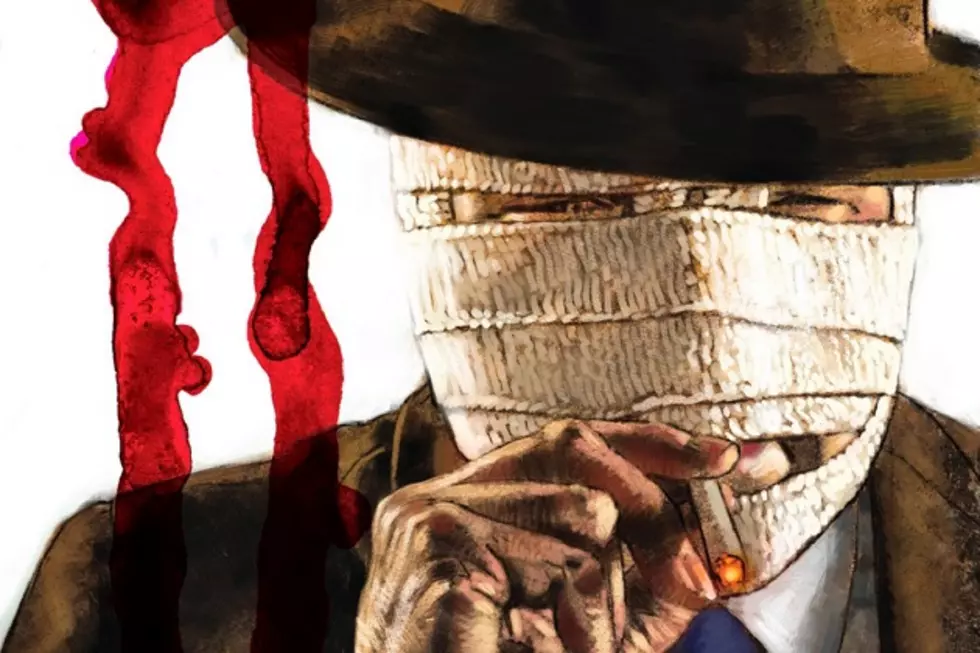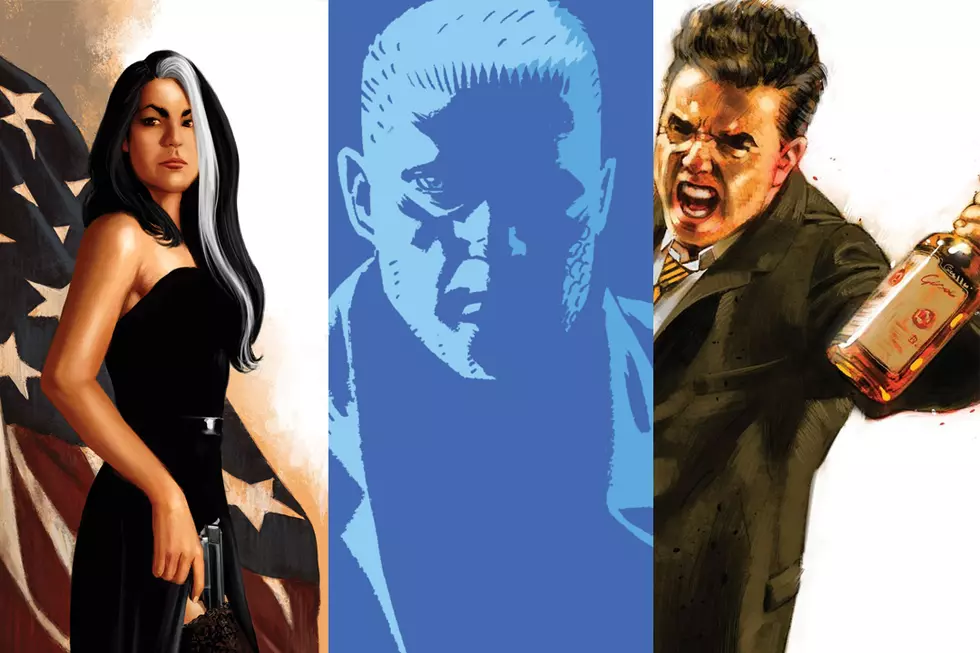![Brubaker & Phillips’ Hollywood Noir ‘The Fade Out’ Is Their Most Ambitious Collaboration Yet [Review]](http://townsquare.media/site/622/files/2014/08/FadeOut01_Review-1.jpg?w=980&q=75)
Brubaker & Phillips’ Hollywood Noir ‘The Fade Out’ Is Their Most Ambitious Collaboration Yet [Review]
We can all agree that Ed Brubaker and Sean Phillips form one of the most successful comics collaborations of all time, right? Over the last fifteen years the pair have routinely produced some of the best comics of the present age -- Sleeper, Incognito, about a thousand pages of Criminal, and the just-completed Fatale. They're the Stan Lee and Jack Kirby of smart, stylish, noir-tinged genre comics. Whenever their names appear together on a cover, it's practically a guarantee of excellence.
Now, after years of telling stories influenced by classic film noir, Brubaker and Phillips head directly to the source with The Fade Out, a dark and enthralling mystery about the dark truths behind the myth of old Hollywood.
The Fade Out takes place at an interesting time and place in American history. In the fall of 1948, just a few years after the war, the country was forming its national identity as a military and industrial powerhouse, cautiously circling a new enemy, and oh so close to crystallizing that ethereal concept of the American dream.
In microcosm, Hollywood, a prominent force in the creation of the American dream, was also in a state of transition. It was just a year past the blacklisting of over 300 artists on the grounds of suspected Communism due to pressure from the House Un-American Activities Committee. In December of 1948, the Supreme Court hit the movie studios with an anti-trust case, bringing an end to the studio system of film-making that defined the "Golden Age of Hollywood". In the following year, as pointed-out by journalist Devin Faraci in his back-matter essay, the "Land" from the "Hollywoodland" sign would be removed, mythologizing a region of land as an idea.
Appropriately for such a conflicted and unsure time, when optimism and paranoia seemed to go hand-in-hand, Brubaker and Phillips are crafting a mystery with multiple layers of deceit, set in the very place where deceit was perfected. While the public perception of Hollywood is dreamily wholesome, behind the scenes it's a hotbed of debauchery and scandal, carefully covered-up by the studios at the height of their powers. When an up-and-coming starlet turns up dead and the Hollywood press machine springs into action, not only is nearly every character a potential suspect, the whole dream-making system is called into question.
Brubaker and Phillips are well-known for their fully-formed and multifaceted characters, but they've reached a new level of detail and subtlety in the first issue of The Fade Out. Within this cast there are numerous secrets and hidden relationships, and Phillips brings tremendous nuance to his realistic character work. Several characters have something to hide, and through Phillips' understated and discriminating facial expressions he's able to convey back-stories and motivations, build an intricate web of relationships, and paint fuller pictures of each cast member.
In particular, the lead, Charlie Parish, is already fascinatingly complex. A screenwriter for a big studio and "part-time reprobate" (as described in the 'Cast of Characters' page), Charlie goes much deeper than the archetypal self-hating writer. Defined as much by his secrets as he is by what's revealed, Parish is like Hollywood: a series of illusions.
Every character in The Fade Out is either a living a lie or facilitating it -- even Dotty, the only one who seems completely innocent, writes fake bios for studio stars -- but Parish is a symphony of big secrets and contradictory values. The mystery in The Fade Out is an intriguing one, but what's truly compelling about this first issue are the characters, and whatever truth hides behind the lies they present to the world.
That world is fully-realized by Phillips. With his typical sense of shadow and style, Phillips brings a moody realism to tarnished Hollywood. Although perfectly capable of stunning the reader with jaw-dropping backgrounds, character interaction is what drives the book, and he portrays their surroundings with a relaxed realism. Colorist Elizabeth Breitweiser provides understated tones that seem to saturate into Phillips's tasteful blacks, and together the duo capture the look of a noir without relying on oft-repeated motifs.
The Fade Out seems almost inevitable. After years of work that displayed the influence of classic film noir, it was probably fated that one day Brubaker and Phillips would make this book. They flirted with similar themes in Fatale -- one story arc covered the same time period, and another dealt with the artifice and corruption of Hollywood -- and it's not surprising that they finally got around to it, or that they're very good at it.
It is, however, extraordinarily pleasing to discover that even after fifteen years of collaboration, the two authors continue to evolve. The first issue of The Fade Out is a beautiful book that offers the most complete characters and the most fascinating concept the pair have created, and the most interesting theme they've explored. It may be the strongest debut in their illustrious partnership.
A stylish, restrained, and realistic take on classic noir, set in its birthplace, The Fade Out is a brilliant beginning to another chapter in Brubaker and Phillips's career.
The Fade Out #1 is on sale now in finer comics shops, ComiXology and digitally from Image Comics.
More From ComicsAlliance






![Brilliant Art, Tremendous Stories and Daring Creators: The 2016 Eisner Award Winners [SDCC 2016]](http://townsquare.media/site/622/files/2016/07/eisner2016.jpg?w=980&q=75)


